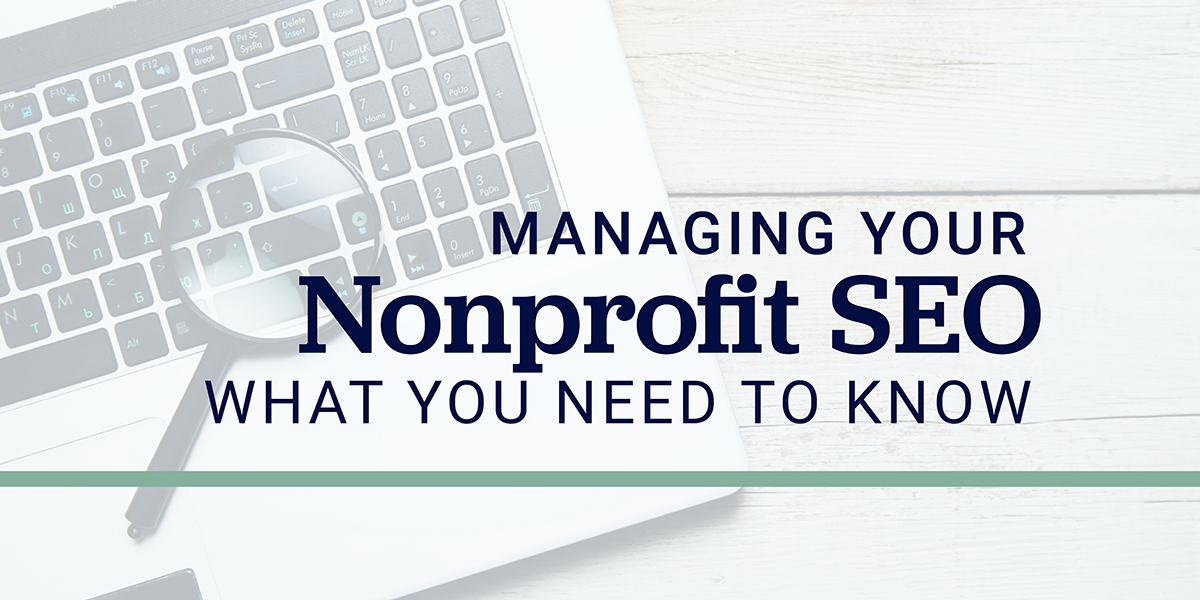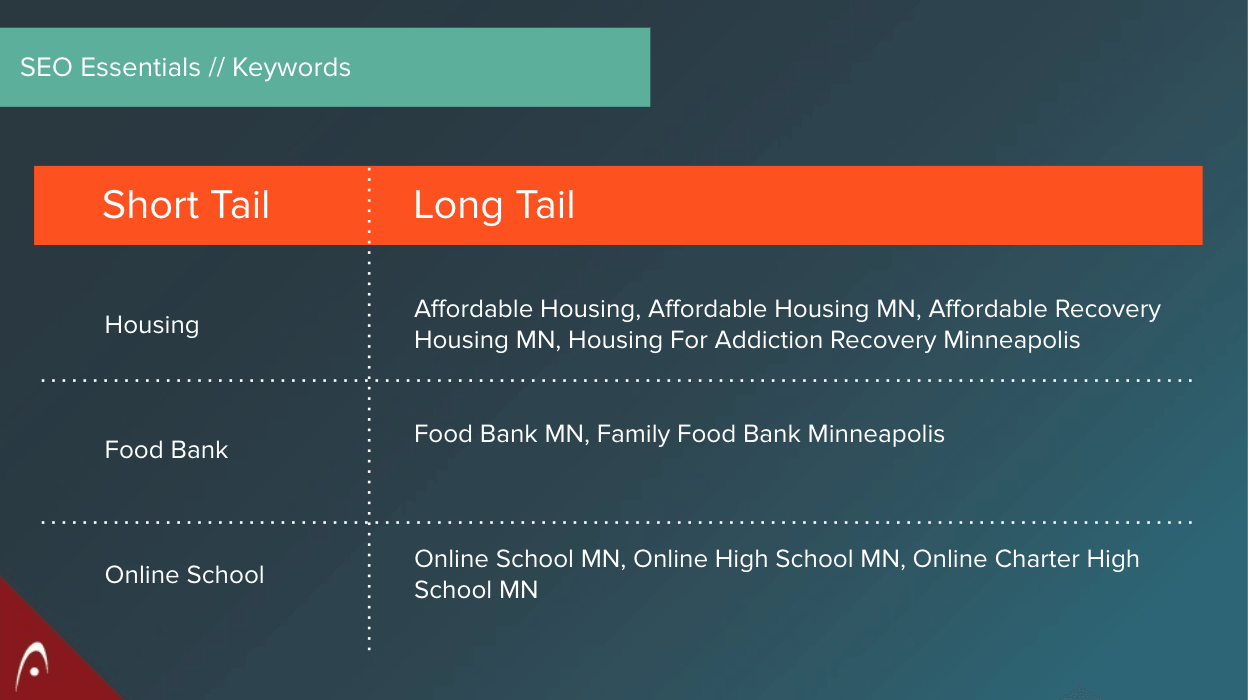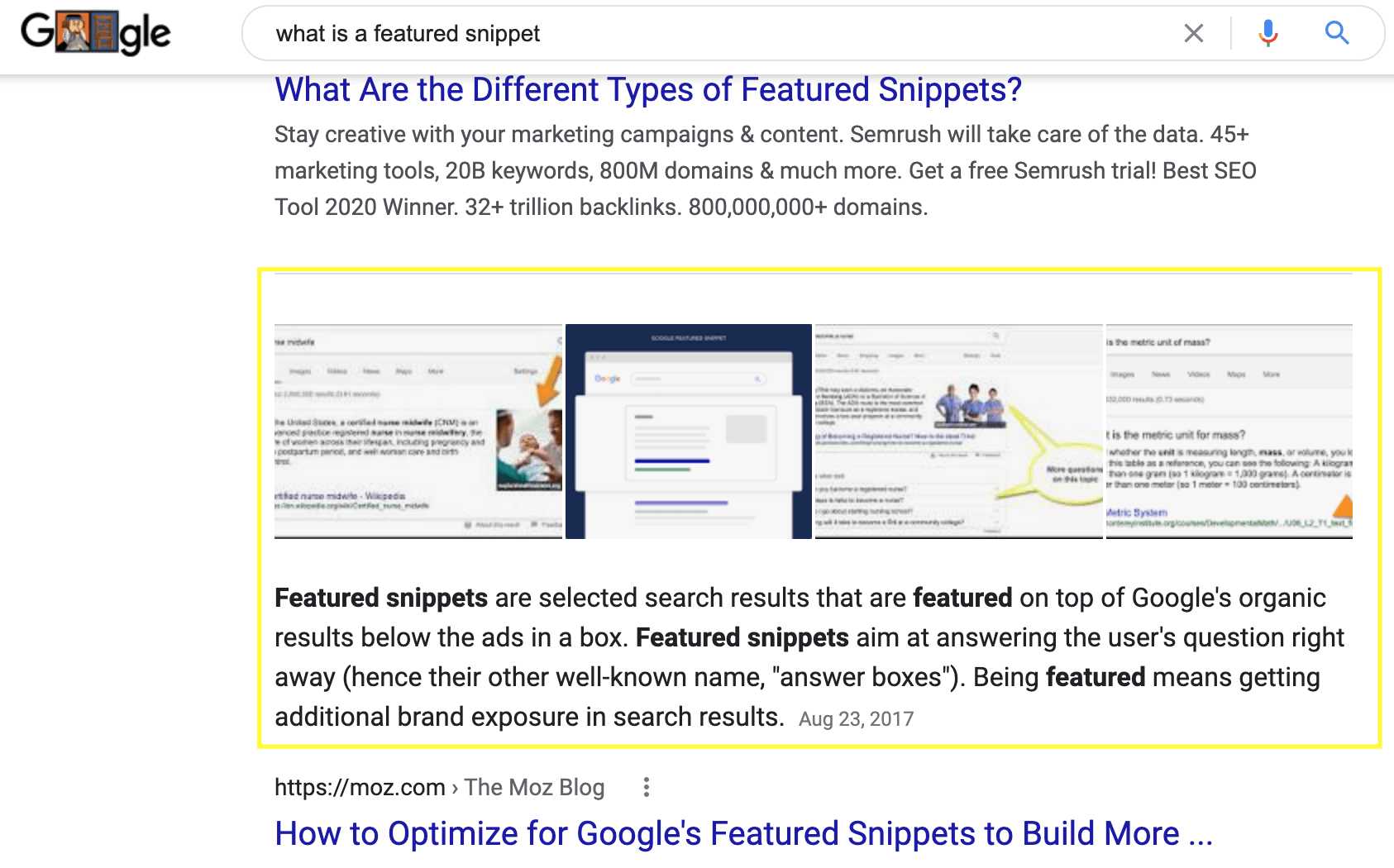Managing Your Nonprofit SEO: What You Need to Know
Olivia Diercks | April 2021

Most nonprofits have heard of SEO (Search Engine Optimization) in some capacity. More often than not, it is a concept they know they should care about, but don’t have the bandwidth for – or the expertise. But nonprofit SEO does not have to be unattainable. With the right perspective, knowledge, and tools, you can manage your nonprofit SEO in an efficient and impactful way, and help further your organization’s mission in doing so.
What You Need to Know About
Nonprofit SEO
SEO is a long game.
It is vital to understand that SEO gains do not come overnight. This is why many organizations close the door on it all too quickly. SEO is many seemingly small tweaks and edits to various aspects of a site which, compounded over time, allow for serious gains in organic traffic (traffic that comes to your website through search results). This is what makes nonprofit SEO extremely powerful, because organic traffic is:
- Earned.
- FREE.
- Engaging users who typically further down in the sales funnel – closer to taking an action
Yes, nonprofit SEO takes time, knowledge, and dedication. But mastering some foundational SEO tactics can save your organization from having to rely solely on paid ads to gain visibility – because you’ll have organic visibility. And while the purpose of SEO at a high level is to increase organic traffic, what it really means for your organization is that your audience will find you more easily, and benefit from your services because of it.
Let’s dive into the three main components of SEO. Knowing these components and some tactics within each will help you hone your nonprofit SEO strategy.
1. On-Page SEO
On-page SEO is the practice of optimizing your website’s content.
Step one: solid content! One common downfall for many websites is thin content that doesn’t provide a lot of value to the user. While word count isn’t everything, pages should have 400 words at a minimum. 800 words is better, and 1,500 is best for competitiveness. But within all those words lie two integral parts to on-page SEO:
KEYWORDS
On-page SEO is centered around informed keyword choices, and those keywords should in turn inform all content production and optimization. You can utilize tools like Google Adwords or SEMrush to help with this process.
- Brainstorm the main words and phrases your organization wants to be known for.
- Be sure to also take into consideration how your users might already be finding you.
- Understand your competition and the competitiveness of certain keywords.
TIP: It is vital to have a blend of Short Tail and Long Tail keywords (about a 1:8 ratio).
Short tail keywords are more general, and have high search volume. These typically attract users who are at the top of the sales funnel, just looking for general information.
Long tail keywords are more precise, and have a lower search volume. They attract users who are at the bottom of the sales funnel, and much closer to following through on an action.

OPTIMIZATION USING KEYWORDS
Once you’ve chosen your keywords, put them to use!
Inject your keywords into the most important sections of your content:
- Meta: Title tag and H1 tags
- Alt Tags: Every single image should have alt text describing the image in depth.
- Every page should have an engaging meta description that is keyword-infused and includes a CTA.
2. Technical SEO
Technical SEO is the practice of optimizing your site performance, including:
- Site speed
- Schema markup (with the goal of securing featured snippets / rich results)
- Internal linking
Because technical SEO is just that – technical – it is not as accessible to manage without the help of tech, development, and/or digital marketing teams. But it is important to understand the components of technical SEO in order to ensure your nonprofit SEO strategy takes advantage of every avenue.
First, let’s define two important concepts when discussing technical SEO.
CRAWLING, INDEXABILITY, and the effects of site speed
Crawling sounds iffy at best, but it is simply the term to describe Google’s and other search engines’ bots scanning your site, to determine what content is worth displaying in SERPs (search engine page results). Believe it or not, Google actually has a quota of how much time they can spend crawling any given site – and once they’ve met it, they move on. This is where indexability comes into play.
Indexability is the accessibility of a site to search engine web crawlers, leading to which and how many pages from that site show up in search engine results. So, if your site has a quick load speed, Google can index more pages, making them readily available for users to find. You can (and should!) even optimize the size of images and other uploaded files to help with site performance. If you’re wondering what your current site speed is, you can use Google’s free tool – Page Speed Insights – which provides a breakdown of which elements are causing speed issues.
TIP: Optimization of the mobile version of your site is vital to a solid nonprofit SEO strategy.
Google has moved to mobile-first indexing, which means it crawls and indexes the mobile version of your site before the desktop version. Whether or not users are visiting your site with mobile devices (though many are!), you must be sure your mobile site is well-optimized.
Schema markup
Schema markup also makes crawling easier for search engines and can seriously boost your SEO. Simply put, it is a way to organize your website’s code in order to allow search engines to identify the most important pieces of information on any given page, their relationship to one another, and what they mean for the user. When schema markup is employed, Google is able to assess the relevance of that information, and whether or not to include it in an answer box or featured snippet on a SERP page. Each of these is an extremely valuable SEO win.
Read this blog from Search Engine Watch for more on schema markup.

internal linking
Internal linking can help boost your nonprofit SEO strategy even further. Connecting your content using an internal linking strategy gives Google and users an idea of the structure of your site, establishing a hierarchy and improving user experience. This also transfers page authority from your most important, cornerstone content, to other “lesser but related” pages.
3. Off-Page SEO
Off-Page SEO deals with tactics outside of your own website, but still within your control, including:
- Backlinks
- Links to your website, on other websites.
- Guest blogging (a form of backlinks)
- Offering to write blogs for other reputable websites, and including a byline with a link to your site at the end of the piece.
- Citations (a form of backlinks)
- A business/organization listing with a link to your website, along with address and other contact information. Think Yelp, YellowPages, etc.
- Social media
-
-
- Any marketing you do within your social media profile, to drive users to your website.
-
The purpose of off-page SEO within your nonprofit SEO strategy, is to bolster search engines’ perception of your site. How other websites, profiles, and people talk about and engage with your site contributes to Google’s willingness to index your pages.
Monitor and Report on Your Efforts
After developing a working knowledge of nonprofit SEO and developing your strategy, it is important to set up reporting to monitor your progress month over month. Free tools like Google Data Studio allow you to compile data from a wide range of sources, including Google Analytics, Google Search Console, various paid ad platforms, social media platforms, etc. You can organize this data in a digestible way so you can see tangible progress month over month and year over year, and link it to your organization’s internal success.
SEO is multi-faceted and requires time – both for execution, and compounding the effectiveness of various efforts. But understanding these foundational SEO tactics can not only save your organization money, but empower you to further its mission. Because your nonprofit SEO strategy is yet another avenue to connect with and reach your audience, and improve and change lives.

